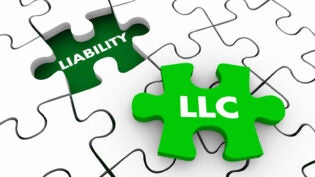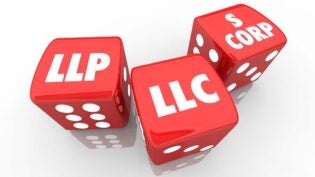
New business owners often ask, “How do I set up my business for tax purposes?” One of the choices you make when starting a business is the type of legal organization you select. This decision can affect how much you pay in taxes, the amount of bookkeeping and paperwork required, the personal liability you might be responsibility for, and your ability of borrow money.
For-profit businesses fall under one of four structures for tax purposes:
- Sole Proprietor – An individual who owns an unincorporated business by themselves. Most small and home based businesses are sole proprietorships. For tax purposes, the business activity of a sole proprietor is reported on Schedule C of Form 1040. This is included in the business owner’s personal income tax return.
- Partnership – Two or more persons join together to carry on a trade or business. Each person contributes money, property, labor or skill, and expects to share in the profits and losses of the business. For tax purposes, a partnership doesn’t pay income tax. Instead, Form 1065 is filed by the partnership and Schedule K-1, which shows the respective share of income and expenses for each partner, is provided to the partners for use in preparing their personal income tax return (Form 1040).
- Corporation – A relationship where prospective shareholders exchange money, property, or both, for the corporation’s capital stock. Profits are taxed to the corporation when earned and then taxed to the shareholders when distributed as dividends (double taxation). A corporation is created by filing paperwork with the secretary of state in the state of incorporation. A corporation is an entity in itself and can sue and be sued. Form 1120 is used to report the income and expenses for a corporation and any income tax.
- S Corporation – A corporation (see item 3. above), meeting certain criteria, that elects to be treated as as S corporation. Generally, an S corporation is exempt from income tax; the shareholders report the S corporation’s income and expenses (via Schedule K-1) on their personal income tax return (Form 1040) similar to a partnership. There are certain tax advantages to electing S status for a corporation. The S Corporation files an information return (Form 1120S) similar to that of a partnership.
- Limited Liability Company (LLC) – An entity created by statute in certain states that is characterized by limited liability for debts similar to that of a corporation. It is managed by members or managers. An LLC is not a taxable entity per se. Depending on the number of members, an LLC may be taxed as a sole proprietor (see item 1.) or as a partnership (see item 2.).
For more information regarding entity selection or assistance in answering the question, “How do I set up my business For Tax Purposes,” connect with me on TaxConnections.
This article was originally published by TaxConnections
Author: Darren Sanford is a CPA, CGMA, entrepreneur and network marketing professional. He is a 25+ year veteran in the small business tax and accounting industry. He is active in accounting and tax education groups both as an instructor and a student and is a beta tester for continuing education programs for several organizations including the AICPA. His passion is sharing knowledge and helping others.
Published: October 29, 2014
3136 Views
3136 Views












